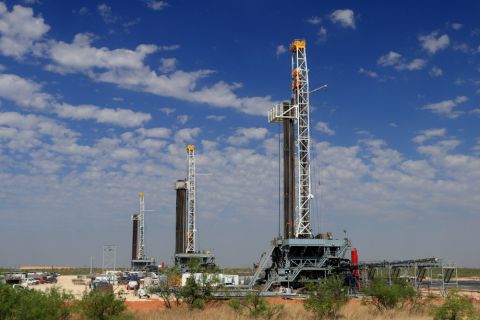Even as Enbridge announces 1,000 layoffs in Houston and Calgary, other companies are starting to come to the realization that they need to start thinking about attracting talent again. It’s an age-old problem in the industry—investors reward companies that shed head count when prices drop, but talented engineers, geophysicists and others don’t just grow on trees. Several studies have recently addressed this issue.
The University of Houston, for instance, released a report in January noting that although many of those who were laid off might return to the industry, they also were not pleased about their treatment during the downturn. “A sizeable percentage of the estimated 230,000 people worldwide who lost industry jobs since 2014 may not want to go back,” a press release announcing the study stated.
The study found that almost two-thirds of those who had found jobs after being laid off were working in other industries, while most remained unemployed. Only 13% had found other jobs within the industry. “Researchers attributed [this] in part to continued industry cutbacks,” the release stated. “But they said other factors are also at play, including workers’ sense that the layoffs were poorly handled.”
The survey was returned by 720 people with a median age of 53, most of whom were male and 73% of whom had college degrees. Additional findings listed in the release included:
- 71% of respondents who said they are anxious about the industry’s future;
- Two-thirds who said they felt their former employer’s discharge procedures were biased and didn’t allow them to share their views; and
- 55% who said they are considering leaving the industry within the next year.
According to the release, Bob Newhouse, an industry consultant who aided with the study, said the findings suggest that human resources and management practices have significant impact on industry perception, which in turn affects the resiliency of the workforce. And despite early warnings of looming layoffs, different people can be treated differently during the actual event, even within the same company.
Still a good place to work?
Another study by Opito, a skills body based in the U.K., shows that students living in the U.K.’s energy hubs still see the North Sea oil and gas business as a viable career. More than 500 students participated in the “Youth Perception of a Career in the Oil & Gas Industry” report conducted by Opito throughout 2016. Study results will be shared with the industry as well as several U.K. organizations.
Students between the ages of 14 and 21 were queried, and of those 81% are interested in pursuing a career in oil and gas. They cited reasons such as the opportunity for global travel, the ability to use cutting- edge science and technology, and salary. More than three-fourths of the respondents consider there to be longevity in the U.K. Continental Shelf. Those who disagreed with this assessment cited a lack of confidence in long-term resources, competition from basins in other parts of the world and increased sustainability in alternative energy.
The role of technology
The Futurestep division of Korn Ferry, meanwhile, released a study predicting talent acquisition in multiple industries. While the study examined several trends based on interviews with recruiting experts around the world, the main theme seemed to be the “ubiquitous presence of technology in the talent world.”
“It doesn’t matter what industry our clients are in—everything from manufacturing to professional services and retail—every company can now be classified as a technology company,” Futurestep CEO Byrne Mulrooney said in a press release. “This has forever changed the way talent acquisition experts do their jobs and what candidates have come to expect.”
Additional findings of the study included:
- “Me Inc.,” indicating that by 2020 as much as 40% of the workforce will be independent contractors;
- “The vagabond HQ,” noting that many companies are moving their corporate headquarters closer to sources of specialized and available talent;
- Big Data and artificial intelligence (AI), which are automating administrative tasks that previously needed to be done manually;
- Longer term metrics, tracking more about an employee’s tenure than just time to hire and cost to hire;
- Keeping information safe;
- Importance of culture in retaining employees and enhancing business performance;
- Use of social media in recruiting; and
- Embracing diversity to plug skills gaps.
No value in the workforce?
Another Korn Ferry study indicated that the majority of the CEOs queried in the study find more value in technology than in their employees. The firm conducted in-depth interviews with 800 business leaders at major companies on their views about the future workforce. Among the findings:
- 63% said in five years technology will be the company’s greatest source of competitive advantage;
- 67% said technology will create greater value in the future than people will; and
- 44% said the prevalence of robotics, automation and AI will make people “largely irrelevant” in the future of work.
Meanwhile, another Korn Ferry study indicated that of the 2,000 professionals it surveyed, 73% plan to look for another job in 2017 because their current job isn’t challenging enough. Adapting to the changing workforce and the threats posed by technology might make that job search challenging indeed.
Global Energy Talent Index: How will the industry staff up?
Susan Klann, Contributing Editor
As the downturn recedes, managing the workforce is once again top of mind for managers and executives. The uncertainties are many: Will skilled talent be available and willing to return to the oil and gas sector? In a generally strong economy, what will it take to compete successfully for employees who may be soured on the industry?
A recent Airswift and Energy Jobline Global Energy Talent Index survey revealed that many recent graduates look askance at the oil and gas industry, favoring new, technologically driven green sectors.
Among major trends, a majority of employees who responded to the survey expect an energy recovery in the next year; hiring managers think a return to health will take 18 months or longer. The employee benefit that respondents—particularly those in North America—rank foremost is a robust health plan. There’s little agreement about hiring time lines or how much
brand matters in attracting talent.
Energy Jobline Managing Director Hannah Peet said the downturn sparked the oil and gas sector’s resilient spirit as companies streamlined operations, shed bureaucracy and turned away from individual solutions and toward idea-sharing and a search for economies of scale. In the aftermath, employees’ expectations have shifted.
“When the dust settles, hiring managers will need to be smart about how they attract new talent,” Peet said. “They can no longer rely on the destructive habits of a salary bid war.”
The good news is that most (73%) employees responding to the survey said they would return to work for their previous employer, and 37% of hiring managers said they have rehired previously laid-off employees.
Hiring managers are concerned about the impact that talent deficits and the aging and retiring workforce will continue to have on the supply of skilled employees. Managers need to revise retention and recruitment approaches and step up training and development to bridge the gap, according to the survey.
For North America in particular, hiring managers said skill shortages are the result of an aging and retiring workforce, fewer professionals entering the industry, tighter immigration policies and lack of succession planning. However, about 18% of North American respondents said they don’t think a skills shortage exists.
Managers said solutions include additional training and development, partnering with colleges, apprenticeships, targeting new industries and bringing back retirees.
Recommended Reading
Is Double Eagle IV the Most Coveted PE-backed Permian E&P Left?
2024-04-22 - Double Eagle IV is quietly adding leases and drilling new oil wells in core parts of the Midland Basin. After a historic run of corporate consolidation, is it the most attractive private equity-backed E&P still standing in the Permian Basin?
Occidental to Divest Some Permian Assets after Closing CrownRock Deal
2024-02-21 - Occidental CEO Vicki Hollub said plans to divest non-core Permian assets would come after closing the pending acquisition of CrownRock — but reports have since emerged that the company is considering selling its share of Western Midstream Partners, valued at about $20 billion, according to Reuters.
SilverBow Gears Up for Proxy Fight with Kimmeridge
2024-04-09 - Both SilverBow Resources and Kimmeridge Energy Management have proposed a slate of candidates for the board of directors with a vote set for May 21.
Brett: Oil M&A Outlook is Strong, Even With Bifurcation in Valuations
2024-04-18 - Valuations across major basins are experiencing a very divergent bifurcation as value rushes back toward high-quality undeveloped properties.
Marketed: Paloma Natural Gas Eagle Ford Shale Opportunity in Frio County, Texas
2024-02-16 - Paloma Natural Gas has retained EnergyNet for the sale of a Eagle Ford/ Buda opportunity in Frio County, Texas.




